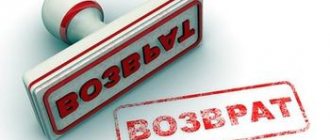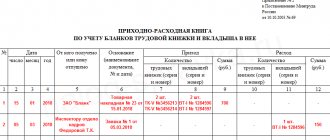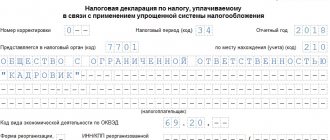The government plans to change the procedure for collecting unified tax from 2019 in order to maintain the current balance of the tax burden. This will primarily affect enterprises and individual entrepreneurs who operate with hired employees. Despite the fact that, in essence, such a fiscal tax was abolished in the early 2000s and instead commercial organizations pay the Pension Fund, Compulsory Medical Insurance Fund and Social Insurance Fund, by inertia many continue to consider their total rate as a single social tax.
UST in 2020: why is it needed?
The abbreviation UST stands for unified social tax. Before moving on to the issue of the size of the UST in 2020, let us briefly dwell on the nature of this tax, its objectives and objects of taxation.
To begin with, let us explain that legally this tax has not existed for several years; it was abolished 9 years ago. But out of habit, different contributions for this purpose are called a single social tax. In addition, there is a possibility that it will be returned.
It is calculated using both budgetary and extra-budgetary sources of funds. The purpose of the UST is to provide employees with the opportunity to receive a state pension and a number of social benefits in the future. From the same source, the necessary amounts are allocated for free assistance in medical organizations, the list of which is determined by law.
Will the Unified Social Tax be returned?
At the moment, there is no such taxation as such.
Starting from 2001 and over the next 9 years, all enterprises paid a single tax. However, it was divided into three others: the Pension Fund, the Compulsory Medical Insurance Fund and the Social Insurance Fund. Back in 2015, an idea was proposed to restore the UST scheme, but the Cabinet of Ministers stated that such an action would lead to the need to abandon the funded part of the pension.
It is worth noting that the tax amount is not going to be reduced.
Who pays, what is the object of taxation
Everyone who officially works must pay this type of tax. These are two large groups of taxpayers.
1. Individual entrepreneurs engaged in private practice.
2. Individuals who do not belong to the category of individual entrepreneurs; Individual entrepreneurs, enterprises and organizations, specific people who make payments to individuals.
These groups have slightly different objects of taxation under the unified social tax. The first group must make deductions from all types of income remaining after taking into account the expenses specified by law. For those who fall into the second group, the entire volume of payments that were made to individuals under contracts of various types becomes objects of taxation: both labor and the entire range of civil law ones.
UST canceled
On January 1, 2010, with the entry into force of Law No. 212-F3 of July 24, 2009, the UST tax was abolished. Two laws have come into force on the territory of the Federation designed to regulate the payment of insurance contributions to extra-budgetary funds.
The provisions set out in the laws concern important social issues, affecting the categories of wages, pensions, and benefits for low-income groups of the population.
In order to protect yourself and your business from unnecessary consequences and problems, it is important for every entrepreneur to know what is: “Personal Income Tax Calculation”?: https://russtartups.ru/buhgalteriya-2/raschet-ndfl.html
Until this date, the percentage of the Unified Social Tax was collected as a single tax on wages, and revenues were distributed among extra-budgetary funds: pension, social insurance and compulsory health insurance.
Now the single unified social tax account is closed, in its place direct accounts of the funds have been opened and the deductions established by law fall directly at their disposal.
The powers of the funds also expanded somewhat; full control over the correct calculation, payment and completeness of incoming contributions was transferred to them.
The innovation led to an increase in contributions from 26% to 30%. In fact, the Unified Social Tax and the insurance contributions that replaced it solve an important social problem: providing state citizens with material support in the form of pensions, benefits, and medical care.
The increase in the rate was a real reflection of the situation: the aging of the country's population and early retirement have reduced the number of people of working age; deductions from their wages are not enough to cover all the costs of the above payments.
Reducing the tax burden for personal income tax and unified social tax in the Tax Code required immediate adjustments.
How is the UST rate calculated in 2020?
For the main group of taxpayers, UST rates in 2020 remained the same as before. What does it consist of? Of these three types of payments:
- contributions to compulsory pension insurance, the rate of which is 22%;
- contributions for compulsory health insurance, their amount is 5.1%;
- payments to the Insurance Fund amounting to 2.9%.
- payments for accident insurance, the rate depends on the risk group of business activity.
The maximum amount of contributions to pension insurance in 2019 was set at 234,832 rubles; in 2020, the maximum amount of pension contributions will increase to 259,584 rubles. As for the interest rate, it varies somewhat depending on the amount of charges.
If the limit set for a given year is reached, it can be adjusted downwards. In 2020, the above-mentioned rate of 2.9% for the Social Insurance Fund is applied to accruals for amounts less than 865,000 rubles. If the amounts are more than 865,000, then the rate on this fund will be zero. In 2020, contributions to the Social Insurance Fund are paid until the income reaches 912,000 rubles.
With regard to contributions to compulsory pension insurance, the rule is the same: if accruals are less than 1,150,000 rubles, then the unified social tax rate is set at 22%, and for payments for amounts over 1,150,000 rubles it is reduced to 10%. In 2020, with an income of 1,292,000, the rate is 22%, and above this amount the rate is reduced to 10%. There are no maximum restrictions for compulsory health insurance; in 2020, 5.1% is calculated from the entire amount of income.
How to calculate UST
UST rates in 2020 will remain the same as before. The total figure will consist of the following contributions:
The maximum possible size of the contribution base for the current year is:
- to the Pension Fund - 876,000 rubles. The rate may be reduced if the indicator reaches the established limit;
- in the Social Insurance Fund - 755,000 rubles. When this indicator is reached, the rate will be equal to zero.
Features of calculations for individual entrepreneurs
How much percent of the unified social tax will individual entrepreneurs have to pay in 2020? A slightly different payment system has been developed for individual entrepreneurs. Firstly, they are not obliged to pay into insurance funds; they can only do this on a voluntary basis. They retain mandatory contributions to two funds: Pension and Medical Insurance. In 2020, both were calculated in proportion to the minimum wage.
The formula was this. We calculate contributions to the health insurance fund based on the rate of 5.1% of the minimum wage for the year, that is, 12 * 5.1% * minimum wage. For the Pension Fund, the calculation is similar, but we apply a rate of 26%.
It must be borne in mind: if the income of an individual entrepreneur per year turns out to be above three hundred thousand rubles, then one percent of the amount by which this limit is exceeded is added to all the deductions listed above.
For payment ↑
In 2020, all representatives of medium and small businesses that use hired labor and transfer funds to the relevant extra-budgetary funds will have to pay the unified social tax.
The category of single social tax payers includes:
- Commercial organizations, regardless of their form of ownership.
- Individual entrepreneurs.
- Self-employed Russian citizens.
- Corporate entities, etc.
To calculate the UST, it is first necessary to determine the tax base. The legislation in force on the territory of the Russian Federation establishes the procedure for forming the tax base for the unified social tax.
For legal entities (LLC)
In order for employers to accrue their obligations under the UST, they need to determine which payments can be used when determining the tax base and which cannot:
| Payments included in the tax base | Payments not included in the tax base |
| wages to employees; | compensation payments upon dismissal of an employee; |
| payment of various remunerations; | benefits assigned by the state; |
| payment of gratuitous assistance; | business trips; |
| payment of royalties; | money paid to employees as compensation for damage caused to their health; |
| payment under civil and licensing agreements, etc. | funds paid to employees as compensation for material damage, etc. |
All employers (legal entities), when determining the tax base for the reporting period, must take into account accrued income to their employees, both in cash and in kind.
It is worth noting that the tax base is determined separately for each employee throughout the entire duration of the employment contract.
For individual entrepreneurs
To calculate the unified social tax, individual entrepreneurs first need to determine the tax base.
To do this, you should summarize all income received in the reporting period:
- income received from the sale of products;
- income received from the provision of services, performance of work, etc.
Documented expenses incurred in the same period must be subtracted from the total amount of income.
For individual entrepreneurs, a fixed payment for the Unified Social Tax for 2020 has also been established.
At the same time, this category of taxpayers is obliged to apply an additional interest rate of 10% when calculating the unified social tax (if the total income exceeds the established limit of 300,000.00 rubles).
How to calculate (formula)
In order to calculate the unified social tax, accountants of commercial enterprises will need to use the following formula:
where UST is the unified social tax payable; WZP – employee’s based salary; DV – additional payments; PSN – percentage tax rate.
In order for individual entrepreneurs and self-employed citizens to calculate the unified social tax, it will be necessary to use the following formula:
where UST is the unified social tax payable; OZP – the main income received in the reporting period; DD – additional income; P – expenses incurred in the reporting period and supported by documents; PSN – percentage tax rate.
To calculate this tax, a table may be useful in which the UST rates for 2020 are indicated in accordance with the changes adopted by the Russian government.
The main category of taxpayers will apply a rate of 34% on the amount of total income not exceeding 624,000.00 rubles.
If the income is above 624,000.00 rubles, then when calculating the unified social tax you will need to pay an additional 10% of the excess amount.
This is interesting: How is an LLC divided during a divorce?
Example 1
A commercial company employs 10 employees who are paid different salaries.
To calculate the unified social tax (per month), it is necessary to determine the tax base for each employee: Director - 25,000.00 Accountant - 18,000.00 Driver - 12,000.00 Storekeeper - 11,000.00 Salesperson - 10,000.00 Salesperson - 10,000, 00 Seller – 10,000.00 Seller – 10,000.00 Loader – 8,000.00 Cleaning lady – 6,000.00
Next, you need to use the formula UST = (OZP + DV) x PSN:
Director – 25,000.00 x 34% = 8,500.00 Accountant – 18,000.00 x 34% = 6,120.00 Driver – 12,000.00 x 34% = 4,080.00 Storekeeper – 11,000.00 x 34 % = 3,740.00 Seller – 10,000.00 x 34% = 3,400.00 Seller – 10,000.00 x 34% = 3,400.00 Seller – 10,000.00 x 34% = 3,400.00 Seller – 10,000.00 x 34% = 3,400.00 Loader – 8,000.00 x 34% = 2,720.00 Cleaner – 6,000.00 x 34% = 2,040.00
In total, a commercial organization must transfer UST in the amount of 40,800.00 rubles.
Example 2
In 2020, individual entrepreneurs using a fixed rate must calculate and pay the Unified Tax in 2 stages:
- All individual entrepreneurs who have chosen any tax regime must transfer contributions under the Unified Social Security in a fixed amount - 20,727.53 rubles.
- In the case where the total income of an individual entrepreneur is more than 300,000.00 rubles, he will have to additionally transfer 10% of the excess amount.
For example, if an individual entrepreneur’s income is 827,000.00 rubles, then he will have to pay in addition to 20,727.53 rubles. pay additional RUB 52,700.00. ((827,000.00 – 300,000.00) * 10%).
Example 3
An individual entrepreneur enjoying benefits received income from sales in the amount of 1,500,000.00 rubles. In the reporting period, he incurred expenses in the amount of 1,214,000.00 rubles.
To calculate the UST, he should use the formula UST = (OD + DD) - P) x PSN:
UST = (1,500,000.00 – 1,214,000.00) x 26% UST = 286,000.00 x 26% UST = 74,360.00 rubles.
https://youtu.be/RWCIgbipuFA
Main changes to the unified social tax
Speaking about the table of UST rates in 2020, we must also remember about a number of amendments related to the payment of UST, which were introduced this year in connection with changes affecting the Tax Code of Russia.
1. Now it is impossible to round off amounts (in any direction) when making deductions of contributions under the Unified Social Tax.
2. The concept of a maximum indicator for accrual of payments for pension insurance has appeared. It is fixed by law, and corresponding changes have been made to local regulations relating to taxation. But such restrictions have not yet been provided for compulsory medical insurance.
3. Insurance premiums will not be collected from the amount of compensation payments that is less than three average monthly earnings if the employee resigns. This innovation also concerns the payment of travel expenses. And insurance interest will not be charged on them, but only if these expenses are documented.
4. From now on, employers will also be required to contribute the necessary amounts for the purposes of pension insurance for foreign citizens hired. Exceptions are provided only for high-class foreign specialists.
5. The number of enterprises granted the right to electronic reporting has increased.
6. Fixed contributions of individual entrepreneurs will not be calculated based on the minimum wage.
UST 2013
With the entry into force of Law No. 212-F3 of July 24, 2009, fixed payments of insurance premiums or the percentage of unified social tax for individual entrepreneurs in 2013 will be calculated from the amount of the established minimum wage - 5,205 rubles. All contributions must be paid to each fund by a separate payment order by December 31, 2013, and the payment to the Pension Fund of the Russian Federation should be divided into an insurance and savings part if the payer was born before 1967.
Payment can be made in a lump sum or throughout the year. If the payer’s business activity begins or ends on the settlement date, insurance premiums are paid in proportion to the number of months worked in the year.
Samples of payment documents can be obtained from the Pension Fund of the Russian Federation or downloaded on the official website of the fund, where the KBK UST (insurance premiums) is also located.
Individual entrepreneurs can also voluntarily enter into legal relations with the social insurance fund and pay contributions in case of temporary disability and maternity. In this case, an additional 2.9% of the minimum wage is charged.
Changes related to postponements and audits
Supervisory enterprises can now, if there are serious reasons, increase the duration of inspections from the previous four months to six. Such grounds are:
- serious violations that require urgent investigation and immediate action; they must be recorded and documented;
- violations in branches located in different constituent entities of the Russian Federation that require verification;
- inaccuracy in documents or lack of requested data;
- failure to timely make insurance payments, including due to force majeure.
The employer (IP) has the right and even must, in the event of such emergency circumstances, ask for a deferment or installment plan for payments for the unified social tax. These may be reasons such as an unreasonable delay in financing, and for enterprises conducting seasonal work, also force majeure: man-made and natural disasters, military operations, etc.
The subject of taxation will need to submit an application in the established form to the relevant organization. Based on it, a certain decision will be made.
Results
The UST was abolished in 2010 as a tax that did not solve the problems for which it was introduced. With the transition to the payment of insurance premiums, all parameters determining the amount of payments to the funds were significantly increased: the tax base, rates, and the range of payers. Since 2020, insurance premiums have been transferred under the control of the tax authorities.
Sources: Tax Code of the Russian Federation
You can find more complete information on the topic in ConsultantPlus. Full and free access to the system for 2 days.
Tables of UST rates in 2020
Insurance premium rates in 2020
| To the Pension Fund for compulsory pension insurance | In the Social Insurance Fund for insurance in case of temporary disability and maternity (VNiM) | In FFOMS for compulsory medical insurance | ||
| From the amount of payments within the established limit of the base | From the amount exceeding the established limit value of the base | From the amount of payments within the established limit of the base | From the amount exceeding the established limit value of the base | 5,1% |
| 22% | 10% | 2,9% | Not credited | |
Reduced insurance premium rates in 2020
| Insured category | OKVED codes for types of activities* | Tariff for calculating contributions | ||
| to the Pension Fund of Russia | in FSS on VNiM | in FFOMS | ||
| Organizations and individual entrepreneurs on the simplified tax system, conducting a preferential type of activity, the income from which is at least 70% of the total income of the simplified tax system. At the same time, the annual income of a simplifier should not exceed 79 million rubles. If this limit is exceeded, the payer of contributions loses the right to reduced tariffs from the beginning of the billing period (clause 5, clause 1, clause 3, clause 2, clause 6 of Article 427 of the Tax Code of the Russian Federation, as amended, valid from 01/01/2017) | 13, 14, 15, 16, etc. | 20 | 0 | 0 |
| Pharmacy organizations, as well as individual entrepreneurs with a license to conduct pharmaceutical activities, on UTII. Reduced contribution rates apply only to employees engaged in pharmaceutical activities (clause 6, clause 1, clause 3, clause 2, article 427 of the Tax Code of the Russian Federation, as amended, valid from 01/01/2017) | 46.18.1, 46.46.1, 47.73 | 20 | 0 | 0 |
| Individual entrepreneurs applying the patent taxation system - in relation to payments and remuneration of employees who are engaged in a patent type of activity. For some types of activities, this “benefit” does not apply (clause 9, clause 1, clause 3, clause 2, article 427 of the Tax Code of the Russian Federation, as amended, valid from 01/01/2017) | 31.0, 74.20, 75.0, 96.01, 96.02, etc. | 20 | 0 | 0 |
| Non-profit organizations on the simplified tax system, except for state and municipal institutions, operating in the field of social services for citizens, scientific research and development, education, healthcare, culture, art and mass sports (clause 7, clause 1, clause 3, clause 2, clause 7 Article 427 of the Tax Code of the Russian Federation as amended, valid from 01/01/2017) | 37, 86, 87, 88, 93, etc. | 20 | 0 | 0 |
| Charitable organizations on the simplified tax system (clause 8, clause 1, clause 3, clause 2, clause 8, article 427 of the Tax Code of the Russian Federation, as amended, valid from 01/01/2017) | 64.9, 88.10 | 20 | 0 | 0 |
| Organizations operating in the field of information technology (clause 3, clause 1, clause 1, clause 2, clause 5, article 427 of the Tax Code of the Russian Federation, as amended, valid from 01/01/2017). | 62, 63 | 8 | 2 | 4 |
| Business entities and partnerships on the simplified tax system that are engaged in the implementation of the results of intellectual activity (inventions, utility models, etc.), the rights to which belong to budgetary and autonomous (including scientific) institutions (clause 1, clause 1, clause 1 Clause 2, Clause 4 of Article 427 of the Tax Code of the Russian Federation as amended, valid from 01/01/2017). | 72 | 8 | 2 | 4 |
| Organizations and individual entrepreneurs that have entered into agreements with the management bodies of special economic zones on the implementation of technological innovation activities, as well as tourist and recreational activities (clause 2, clause 1, clause 1, clause 2, article 427 of the Tax Code of the Russian Federation, as amended, valid. from 01/01/2017). | 65.20, 79.1, 94.99, 62.0, 63.1, 63.11.1, etc. | 8 | 2 | 4 |
| Payers of contributions making payments and rewards to crew members of ships registered in the Russian International Register of Ships (with some exceptions) in relation to these payments (clause 4, clause 1, clause 2, clause 2, article 427 of the Tax Code of the Russian Federation, as amended, valid from 01/01/2017) | 50 | 0 | 0 | 0 |
| Organizations that have received the status of a participant in the project for the implementation of research, development and commercialization of their results “Skolkovo” (clause 10, clause 1, clause 4, clause 2, article 427 of the Tax Code of the Russian Federation, as amended, valid from 01/01/2017) | 72.1 (Part 8 of Article 10 of the Law of September 28, 2010 No. 244-FZ) | 14 | 0 | 0 |
| Payers of contributions who have received the status of a participant in a free economic zone on the territory of the Republic of Crimea and the federal city of Sevastopol (clause 11, clause 1, clause 5, clause 2, clause 10, article 427 of the Tax Code of the Russian Federation, as amended, valid from 01.01. 2017) | Any OKVED codes, except 05, 06, 07, 08, 09.1, 71.12.3 (Part 2 of Article 12 of the Law of November 29, 2014 No. 377-FZ) | 6 | 1,5 | 0,1 |
| Contribution payers who have received the status of resident of the territory of rapid socio-economic development (clause 12, clause 1, clause 5, clause 2, clause 10, article 427 of the Tax Code of the Russian Federation, as amended, valid from 01/01/2017) | Types of activities are established separately for each territory (clause 1, part 2, article 3 of Law No. 473-FZ dated December 29, 2014). | 6 | 1,5 | 0,1 |
| Payers of contributions who have received the status of resident of the free port of Vladivostok (clause 13, clause 1, clause 5, clause 2, clause 10, article 427 of the Tax Code of the Russian Federation, as amended, valid from 01/01/2017) | Any types of activities, except those prohibited by the decision of the Supervisory Board of the Free Port of Vladivostok (Part 1.2 of Article 6 of the Law of July 13, 2015 No. 212-FZ). For example, oil and natural gas production activities are prohibited, OKVED code 06.1 | 6 | 1,5 | 0,1 |
Tax benefits
There will be no special tax breaks in 2020, because the transitional grace period for insurance premiums under federal law is ending, so the majority of those people who were on the simplified tax system will pay 30 percent contributions.
However, a reduced rate of 20% will apply to non-profit and charitable organizations that use the simplified tax system. The benefit is provided until 2024.
Previously, bills were discussed that provide for a planned increase in contributions for the simplified tax system. However, the authorities decided that such events were not planned.
Today, the tax code has a single tariff of 30%.
Accordingly, the single social contribution for entrepreneurs on a single tax and for those simplified, with a few exceptions, will remain the same.
The following companies can count on benefits under Article 427 of the Tax Code of the Russian Federation;
- Organizations engaged in the IT field;
- Airlines; charitable foundations that use the simplified tax system;
- Residents of the seaport of Vladivostok;
- Companies that operate in the territory of the free economic zone of Crimea, as well as Sevastopol.
Categories of individual entrepreneurs for which the preferential tariff was canceled in 2020
| Organizations and individual entrepreneurs on the simplified tax system, conducting a preferential type of activity, the income from which was at least 70% of the total income of the simplified tax system. At the same time, the annual income of the simplifier did not exceed 79 million rubles. | 13, 14, 15, 16, etc. | 22 | 5,1 | 2,9 |
| Pharmacy organizations, as well as individual entrepreneurs with a license to conduct pharmaceutical activities, on UTII. | 46.18.1, 46.46.1, 47.73 | 22 | 5,1 | 2,9 |
| Individual entrepreneurs applying the patent taxation system - in relation to payments and remuneration of employees who are engaged in a patent type of activity. For some types of activities, this “benefit” was not applied (clause 9, clause 1, clause 3, clause 2, article 427 of the Tax Code of the Russian Federation, as amended, valid from 01/01/2017) | 31.0, 74.20, 75.0, 96.01, 96.02, etc. | 22 | 5,1 | 2,9 |
Last changes
Well, first of all, let us remind you that since last year, control over the calculation and payment of insurance premiums has been exercised by the Federal Tax Service.
The administration of personalized accounting for the pension program remains with the Pension Fund of Russia, and the Social Insurance Fund controls both the receipt and expenditure of compulsory social insurance funds against accidents, and also verifies all social payments.
As for the specifics of the numbers, it is first worth discussing the limit values of the bases, because the size of the remuneration very much depends on how much tax will be paid on all this, what kind of tax it will be, and whether it will, in fact, be paid at all.
Firstly, according to the Pension Fund of Russia the threshold is set at 1,021,000 rubles. – above this value the tax is paid at a reduced rate, currently 10%. For the Social Insurance Fund, the same figure is 815,000 rubles. (income above this rate is not taxed at all). But there have never been any additional restrictions on health insurance - it is paid regardless of the amount.
The overall total tariff was fixed at 34% (against the previous 30), of which 2.9% goes to social insurance, 26% to the Pension Fund, and 5.1% to the Compulsory Medical Insurance Fund.
As for certain categories of preferential taxation, they do not pay at all for social security or medical insurance, and only 20% for pension enterprises and individual entrepreneurs using the simplified tax system (the specific permitted type of activity must be looked at in Article 427 of the NKRF):
- individual entrepreneurs on PSN;
- pharmacy organizations and individual entrepreneurs on UTII with a similar type of activity;
- NPOs on the simplified tax system (scientific, health, social, cultural and sports activities);
- charitable organizations on the simplified tax system.
The rest of the detailed list of exceptions and cases that differ from standard rates should be viewed on the official website of the Federal Tax Service.
There are also separate transfers to the Pension Fund for persons employed in special, including hazardous, types of work, a list of which and the corresponding interest rates can be found there.
The self-employed, in turn, pay a fixed amount of pension insurance contributions in the amount of 26,545 rubles. (amount of income up to 300,000 rubles) and plus 1% of the amount of excess of the actual remuneration over these three hundred thousand, if any.
True, for the latter case there is a limit on the amount accrued and paid, equal to eight times the standard amount of payments - 212,360 rubles. Compulsory medical insurance in 2020 in both cases, self-employed people pay the same - 5840 rubles each.
Insurance premiums for individual entrepreneurs “for themselves” in 2020
| Fixed payment for compulsory health insurance | 6884 rubles |
| A fixed payment for compulsory pension insurance, if the amount of the individual entrepreneur’s annual income does not exceed 300,000 rubles. | 29,354 rubles |
| Additional payment to the Pension Fund if the annual income of an individual entrepreneur exceeds 300,000 rubles. | 1% of the amount of the annual income of an individual entrepreneur, reduced by 300,000 rubles, but not more than 234,832 rubles. The maximum amount of contributions paid by individual entrepreneurs to the Pension Fund in 2020 is RUB 234,832. (RUR 29,354 x 8). Minus the fixed payment for compulsory pension insurance, the result is 205,478 rubles. (234,832 – 29,354.) |
Calculation procedure
Apparently, business entities should not expect the return of the UST in 2020, at least the fiscal services do not have such information. And the new reporting will be compiled according to the rules of 2020, which means that the Unified calculation of insurance premiums will consist of three separate sections, where data from the DAM and 4-FSS will be partially duplicated.
The government is not interested in returning the UST from 2020, since in fact it is still paid by business entities, to whom it is accrued in a different form and form. In particular, today this fiscal fee consists of several components, the size of each of which is determined by current legislation:
- pension contributions (22%);
- social contributions (2.9%);
- Compulsory medical insurance (5.1%).
Moreover, if the salary exceeds the legal value of 870 thousand rubles, then the contribution to the Pension Fund of the Russian Federation is only 10%
For self-employed citizens, the contribution to the Compulsory Medical Insurance Fund is 6,884 thousand rubles, and to the Pension Fund - about 29,354 thousand rubles, if the amount of income does not exceed 300 thousand rubles. (if it is greater than this value, then it is 1 percentage point higher, but not more than 234.832 thousand rubles).
To avoid penalties, an organization (IP) must timely pay all fiscal fees required by law and submit financial statements. You can familiarize yourself with the procedure for paying such payments and the rules for drawing up documents on the Federal Tax Service website or in any territorial division of the Agency.
Insurance premiums for individual entrepreneurs “for themselves” in 2020
| Fixed payment for compulsory health insurance | 8,426 rubles |
| A fixed payment for compulsory pension insurance, if the amount of the individual entrepreneur’s annual income does not exceed 300,000 rubles. | 32,448 rubles |
| Additional payment to the Pension Fund if the annual income of an individual entrepreneur exceeds 300,000 rubles. | 1% of the amount of the individual entrepreneur’s annual income, reduced by 300,000 rubles, but not more than 259,584 rubles. The maximum amount of contributions paid by individual entrepreneurs to the Pension Fund in 2020 is RUB 259,584. (RUR 32,448 x 8). Minus the fixed payment for compulsory pension insurance, the result is 227,136 rubles. (259,584 – 32,448.) |
Distribution[ | ]
| Direction of deduction | 1st limit (RUB 0-280,000 inclusive) | 2nd limit (RUB 280,000—RUB 600,000 inclusive) | 3rd limit (more than RUB 600,000) |
| FB[6] | 6 % | 2,4 % | 2 % |
| Pension Fund | 14 % | 5,5 % | 0 % |
| TFOMS | 2 % | 0,5 % | 0 % |
| FFOMS | 1,1 % | 0,6 % | 0 % |
| FSS | 2,9 % | 1 % | 0 % |
This might also be useful:
- How to make a Z-report at the cash register?
- How to reduce the simplified tax system for insurance premiums?
- Examples of calculating UTII in 2020
- Payment of 1% on income over 300,000 rubles
- Transport tax under the simplified tax system and OSNO in 2020
- Property tax for organizations and individuals
Is the information useful? Tell your friends and colleagues
Dear readers! The materials on the TBis.ru website are devoted to typical ways to resolve tax and legal issues, but each case is unique.
If you want to find out how to solve your specific issue, please contact the online consultant form. It's fast and free!
Calculator
For maximum convenience, it is better to use special online calculators for calculations. They usually have default rates for standard payers. Beneficiaries need to enter their information. When making deductions based on standard tariffs, you can specify the salary amount, and the calculator will display the final data in the form of a table.
SV tax collections for small businesses are steadily growing and will continue to increase, which is very disappointing. But if you evade deductions, liability will follow. Therefore, in order to avoid strict sanctions, deductions should be made on time.
Amount of insurance premiums
Every month the employer is obliged to pay insurance premiums for each of its employees.
They are paid in addition to the monthly salary and at the expense of the employer. In this they differ from the personal income tax of 13%, which the employee pays monthly out of his own pocket, and the employer acts only as a tax agent and transfers this money to the budget. Previously, the employer paid contributions in a single payment to the unified social tax, which mobilized citizens' funds for their future pension provision, social insurance and medical care. The tax rate was 26%. After the abolition of the unified social tax, insurance premiums began to be paid separately to the Pension Fund, Social Insurance Fund and Federal Compulsory Medical Insurance Fund. But this does not change the essence of the deductions. Since 2011, the total amount of contributions has increased to 34% due to an increase in pension contributions. This led to an increase in gray payments and a decrease in tax collection, then a decision was made to reduce insurance premiums. In 2013-2014 their size was 30% of the employee’s official salary.
Why are they talking about returning the unified social tax in a single form?
The conversation that the single tax may return arises against the backdrop of the fact that some experts are emphasizing that one payment contribution will significantly make life easier for the majority of entrepreneurs and organizations in the country. Today, representatives of the accounting department need to constantly think about which fund to go to for employee salaries, which often leads to confusion in documents and a large number of errors. The introduction of one payment will allow you to make transfers using uniform details. However, you will still have to submit reports to different funds, which can create some difficulties.
The Federal Tax Service (FSN) is currently developing the social base of this tax, but this law has not yet been adopted, and all the old rules for its calculation will continue to apply in the future.












